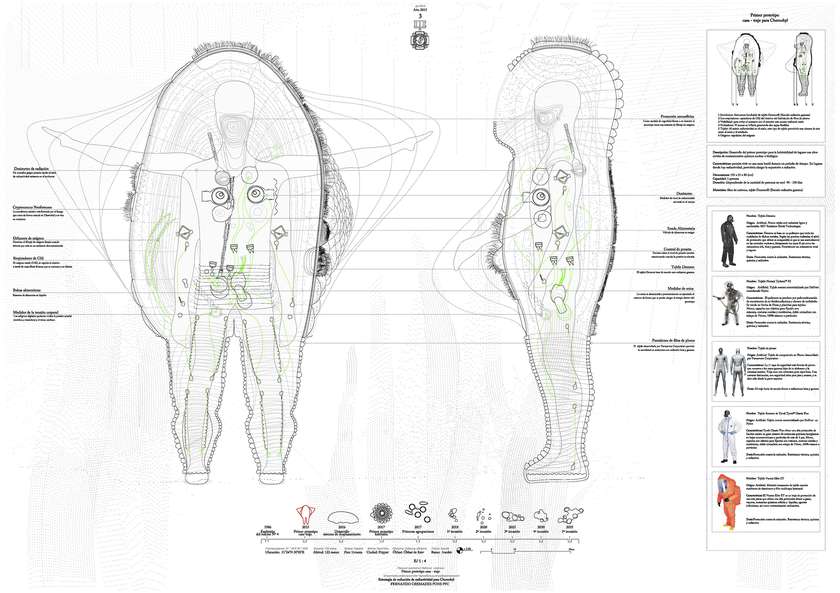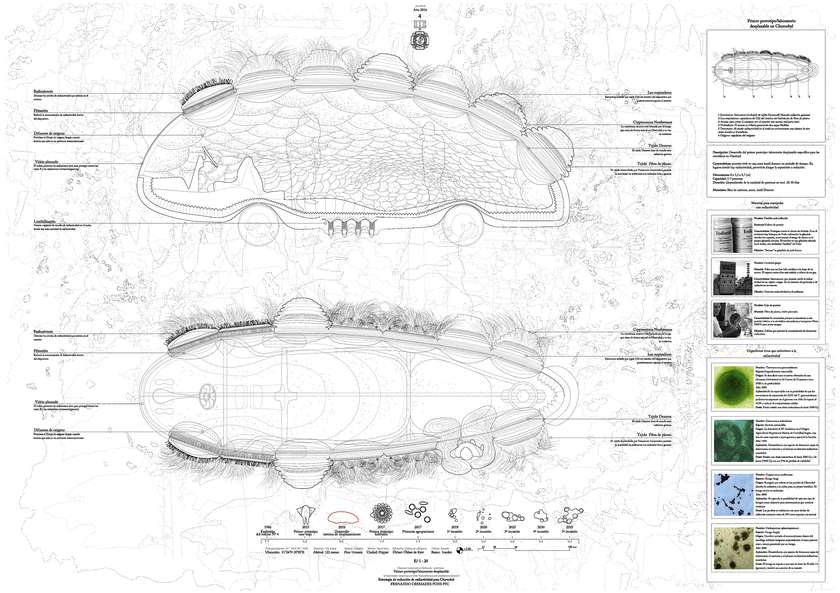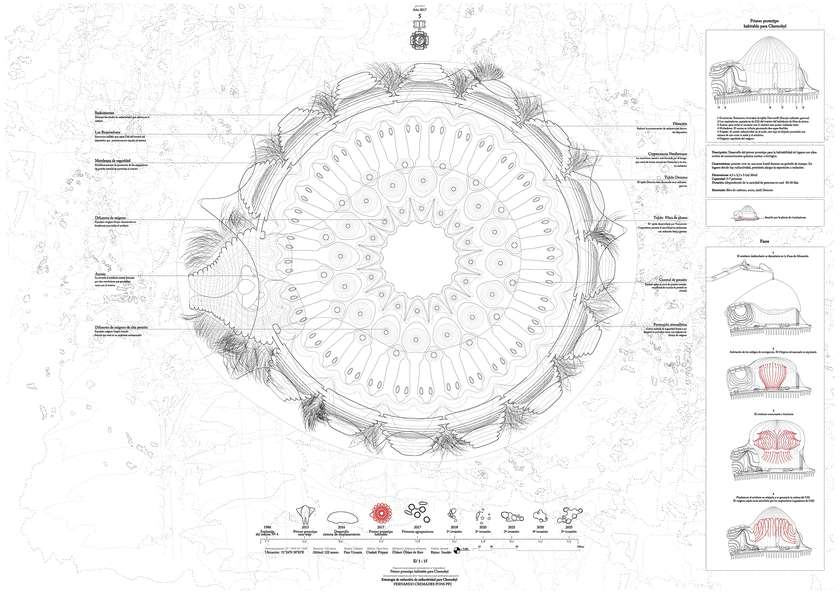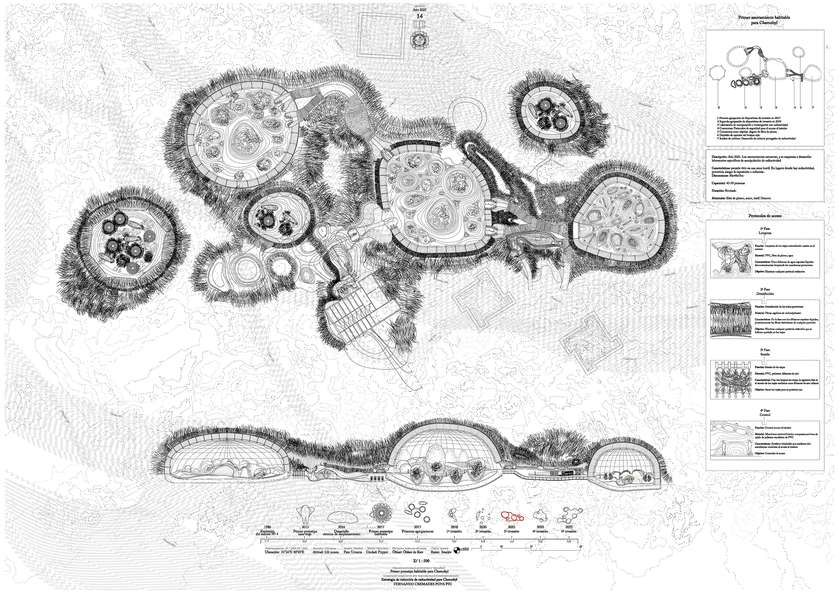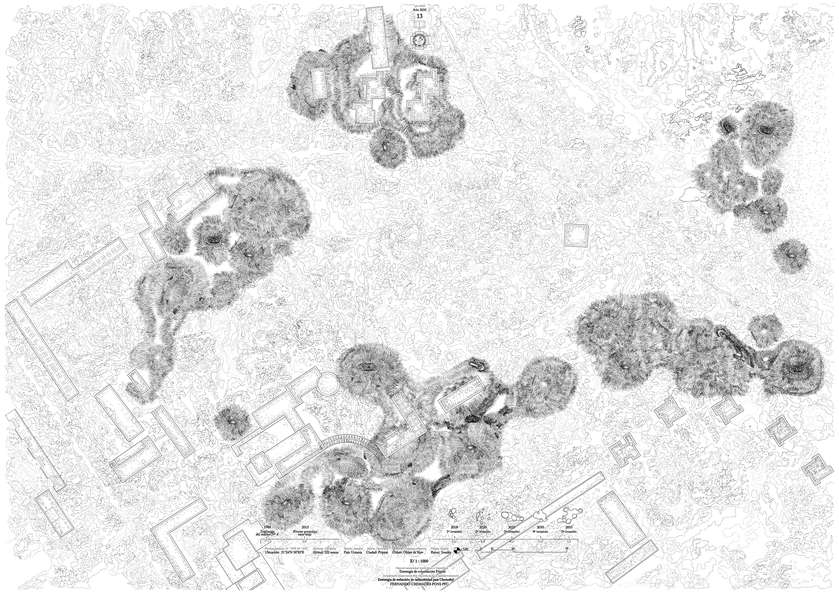Idea by
Fernando Cremades
Fernando Cremades
http://w3.fernandocremades.com
Call for ideas 2019
Strategy of reduction of radioactivity for Chernobyl
Strategy of reduction of radioactivity for Chernobyl
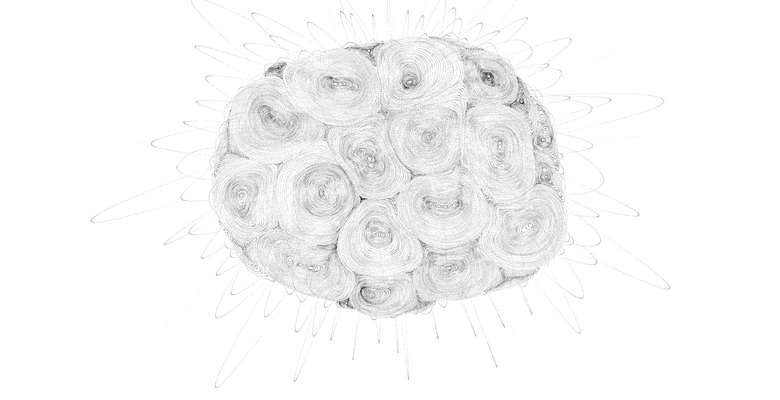
- New alliances
In April 1986 the Nuclear Plant in Chernobyl suffered an accident: a group of repairmen were trying to increase the power of the nuclear reactor, when suddenly there was an explosion and radioactive material was expelled into the atmosphere and released large quantities of radioactive particles over Europe.
It is believed there will be workers in the Nuclear plant up to 2040 so the project is a strategy to reduce exposure of radioactivity to Chernobyl workers. I propose the rehabilitation of Pripyat, the city close to Chernobyl: from a new dress-capsule for the workers, a first prototype to live in to new ways of farming in radioactive areas. The target of the project is to prevent workers from getting affected by radioactivity.
Architecture should no longer be considered accordingly to a system of three axes spatial coordinates: there are other agents to keep in mind such as air or radioactivity that should be considered as part of the architectural factors
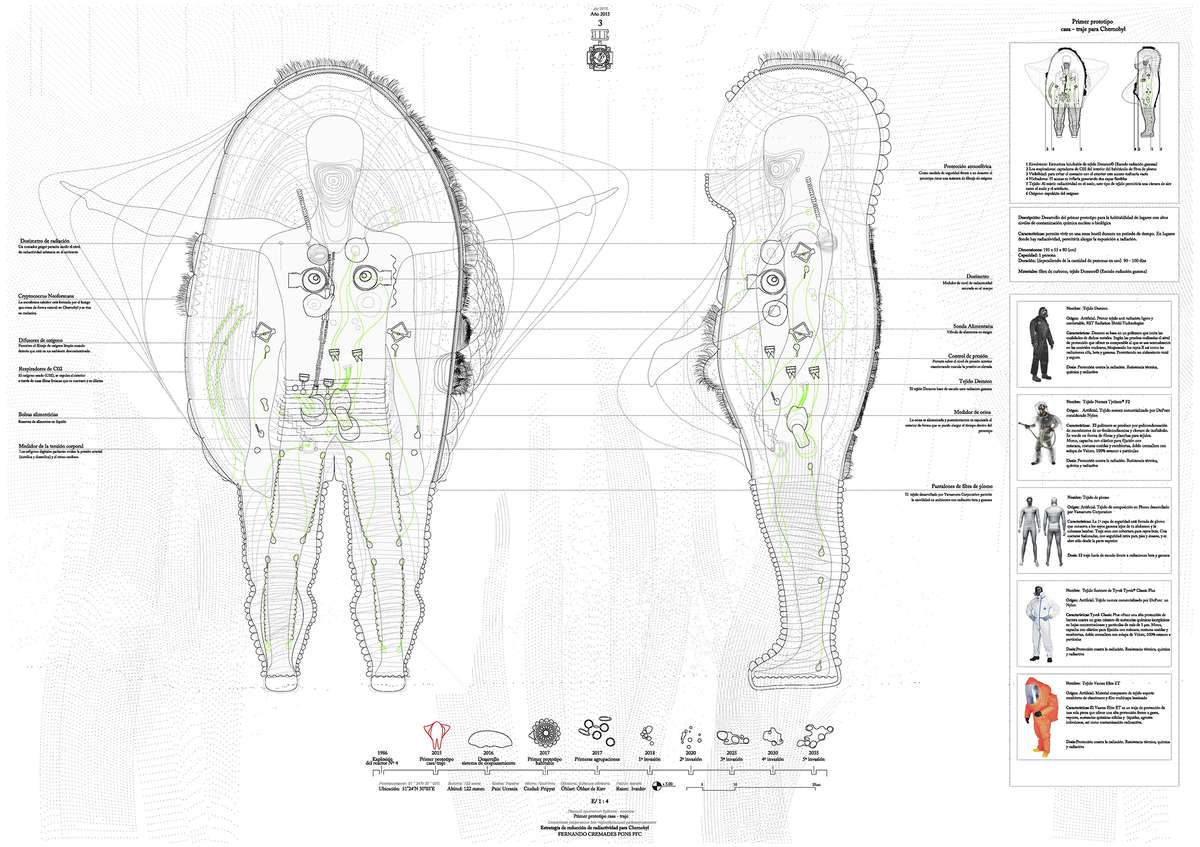
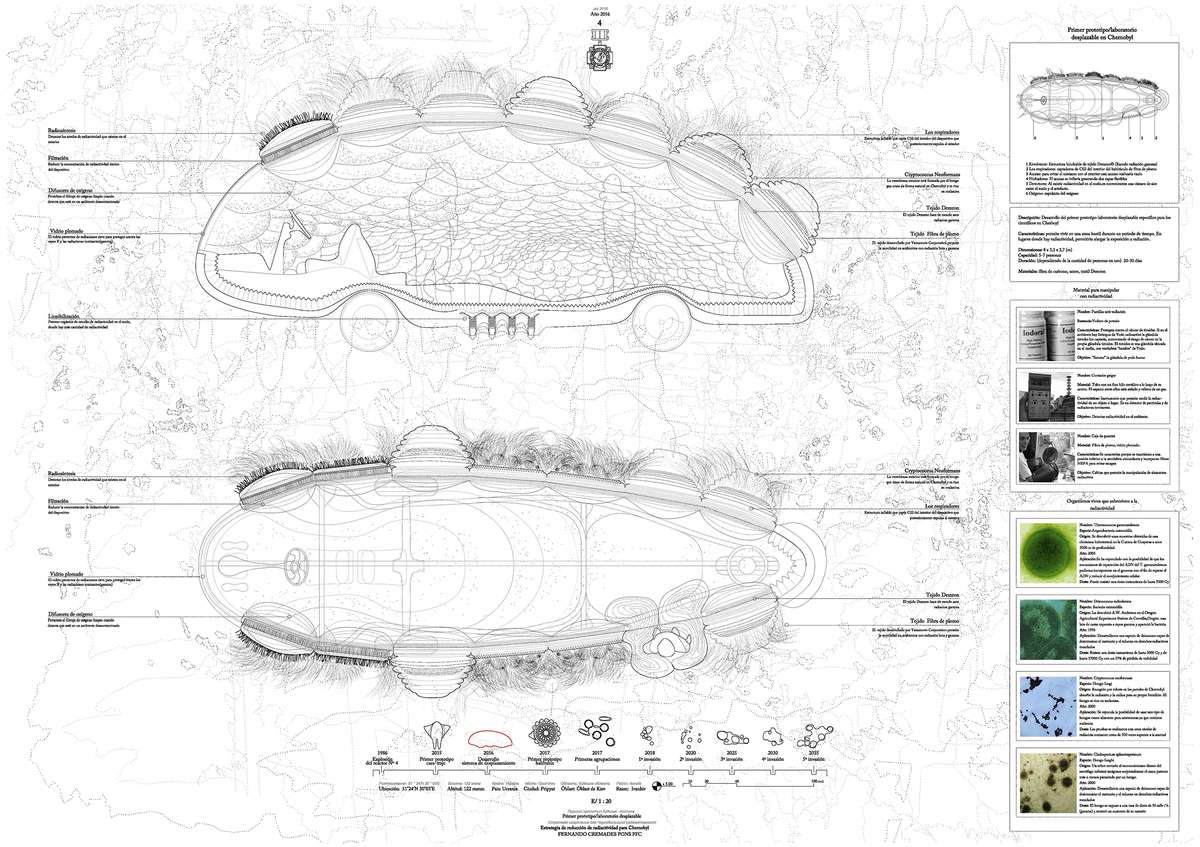



Strategy of reduction of radioactivity for Chernobyl
Strategy of reduction of radioactivity for Chernobyl

- New alliances
In April 1986 the Nuclear Plant in Chernobyl suffered an accident: a group of repairmen were trying to increase the power of the nuclear reactor, when suddenly there was an explosion and radioactive material was expelled into the atmosphere and released large quantities of radioactive particles over Europe.
It is believed there will be workers in the Nuclear plant up to 2040 so the project is a strategy to reduce exposure of radioactivity to Chernobyl workers. I propose the rehabilitation of Pripyat, the city close to Chernobyl: from a new dress-capsule for the workers, a first prototype to live in to new ways of farming in radioactive areas. The target of the project is to prevent workers from getting affected by radioactivity.
Architecture should no longer be considered accordingly to a system of three axes spatial coordinates: there are other agents to keep in mind such as air or radioactivity that should be considered as part of the architectural factors
